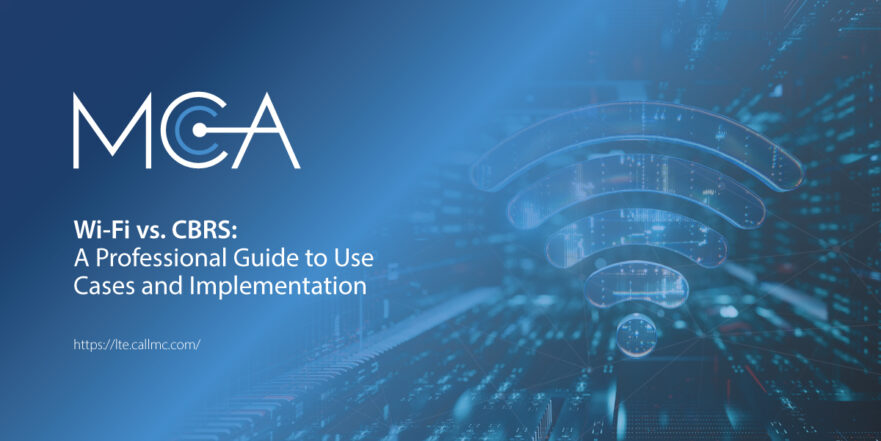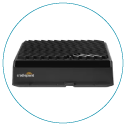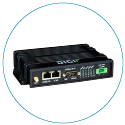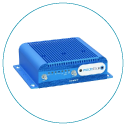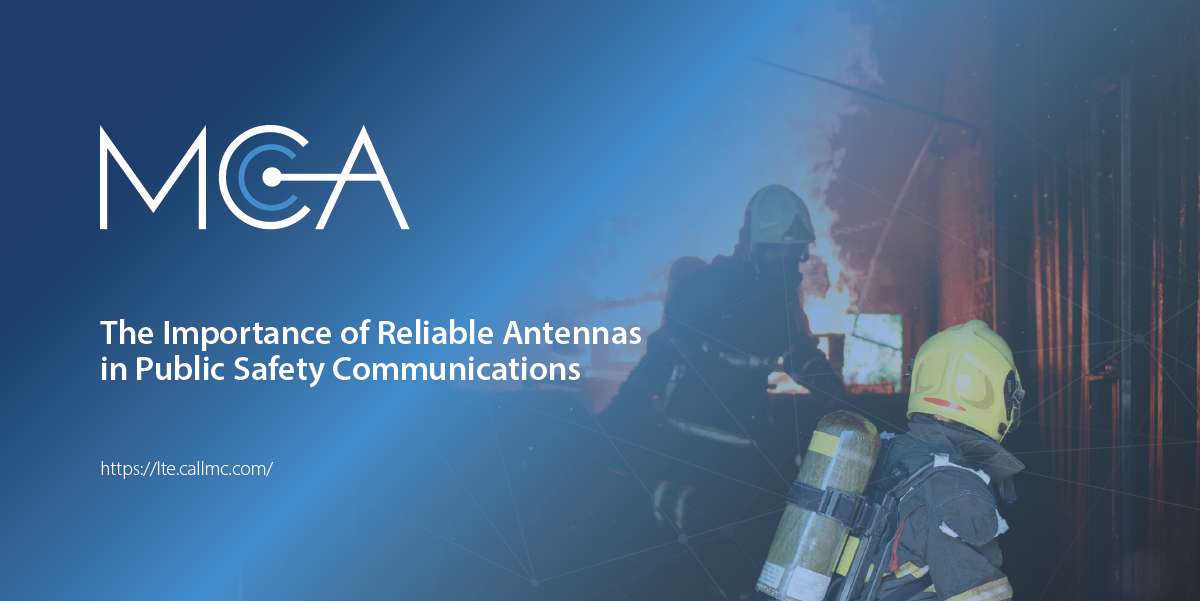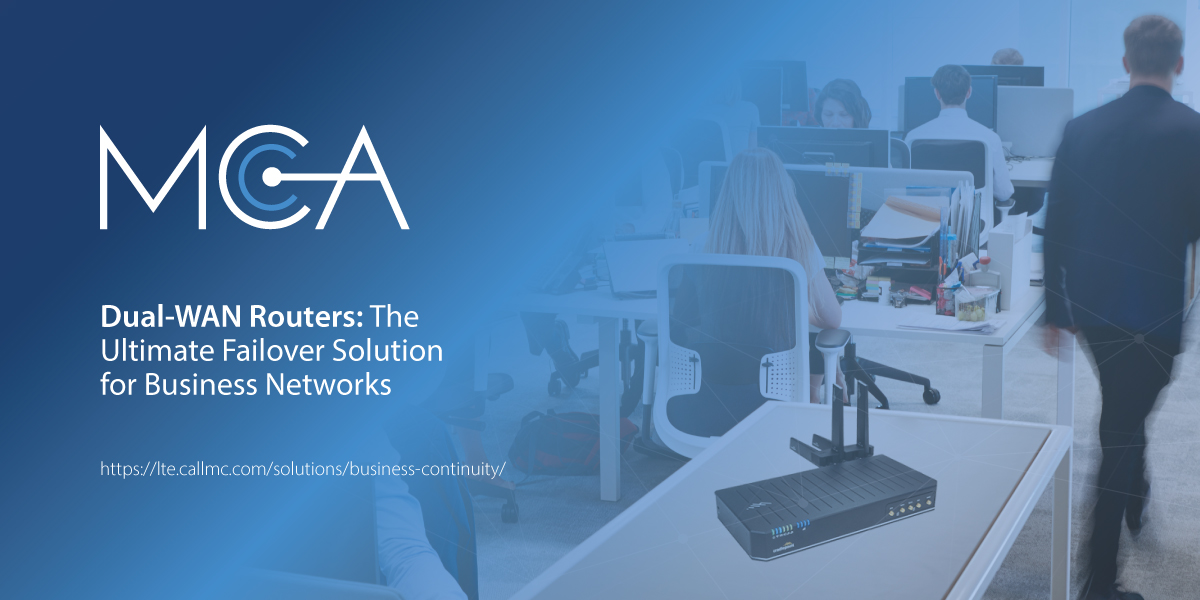Wi-Fi vs. CBRS: Choosing the Right Wireless Solution
Wi-Fi Advantages and Use Cases
Wi-Fi has undeniably solidified itself as a wireless connectivity staple in residential and enterprise environments. For small-to-medium-scale deployments, such as a small municipality of approximately 30,000 people, Wi-Fi access points (APs) prove to be a cost-effective solution. With lower per-unit costs, deploying Wi-Fi APs for targeted areas ensures reliable coverage without overextending network budgets.
Wi-Fi's simplicity in management and integration is a significant advantage. Devices connected to Wi-Fi are easily accessible from the network, and administrators can use VLANs to segment traffic and route data between devices efficiently. Wi-Fi works exceptionally well for external, less secure applications or where device compatibility takes precedence.
For example, facility parking lots, visitor networks, or environments where legacy devices without advanced security requirements operate are natural fits for Wi-Fi. These factors make Wi-Fi appealing in environments where ease of deployment, accessibility, and costs are prioritized over performance and security robustness.
Why Choose Wi-Fi?
Key Benefits of Wi-Fi
- Cost-Effective Access Points: Wi-Fi access points (APs) are budget-friendly to purchase, install, and maintain, making them an attractive option for cost-conscious deployments compared to CBRS infrastructure.
- Easy Deployment and Scalability: Wi-Fi networks are plug-and-play, requiring minimal technical expertise to set up and scale, making them ideal for small to medium enterprises, public venues, and office spaces.
- Extensive Device Compatibility: Every modern device, including laptops, smartphones, IoT devices, and guest networks, supports Wi-Fi, ensuring seamless connectivity for a wide range of users.
- Flexible Network Management: With VLANs, IT administrators can efficiently segment network traffic, enhancing both performance and security across different user groups.
- No Spectrum Licensing: Operating in unlicensed spectrum bands, Wi-Fi eliminates the need for expensive spectrum licenses or the complexities of spectrum-sharing regulations.
The Limitations of Wi-Fi
- Limited Range and Coverage: A single Wi-Fi access point typically covers a smaller area than a CBRS-enabled private LTE network, requiring dense deployments for larger spaces.
- Interference and Congestion: Wi-Fi’s shared spectrum is prone to interference from neighboring networks, especially in urban or high-density areas, leading to signal degradation and connectivity issues.
- Security Vulnerabilities: While enterprise Wi-Fi offers advanced security features, Wi-Fi networks are inherently more susceptible to unauthorized access and cyberattacks compared to private LTE networks.
- Roaming Challenges: Devices moving between Wi-Fi access points may experience latency or dropped connections, especially in poorly designed networks. However, if the network is well-designed and a mobility controller is in place, roaming in Wi-Fi can work quite well. A mobility controller transfers the connectivity state (association and authentication) of the end user device (EUD) between APs without requiring re-authentication or re-registration. In contrast, Wi-Fi networks lacking a mobility controller are more prone to service interruptions during handoffs.
Best Use Cases for Wi-Fi
CBRS and Private LTE for Industrial Edge Applications
CBRS, leveraged through Private LTE (PLTE), offers distinct benefits for enterprise-grade and industrial deployments requiring enhanced control, security, and scalability. Unlike Wi-Fi, a single private cellular access point can cover the same area that might otherwise demand 15 to 20 Wi-Fi APs. This translates to lower infrastructure maintenance costs and comparable or even superior quality of service. For manufacturing facilities or densely populated industrial ecosystems, private wireless networks eliminate the need for dense Wi-Fi access point deployments while ensuring higher throughput and reliability. Private LTE networks provide granular control through secure gateways, enabling service-level agreements (SLAs) and ensuring seamless coverage for mission-critical operations.
However, PLTE network management can add complexity. Due to the way IP addresses are assigned, each device essentially operates as if it were on its own VLAN, requiring advanced configuration. Devices that do not natively support Band 48 (B48), a core PLTE frequency, may necessitate cellular routers like the Ericsson R500, which convert CBRS signals into standardized Wi-Fi connectivity.
This enables organizations to leverage the robust, secure private wireless infrastructure while accommodating sensors and devices more commonly compatible with Wi-Fi standards.
Why Choose CBRS?
Key Benefits of CBRS and Private LTE
Extended Coverage with Fewer Access Points
Secure, Interference-Free Spectrum
High-Speed, Low-Latency Connectivity
Seamless Mobility and Roaming
Support for IoT and Industrial Devices
Customizable Spectrum Management
Challenges of Using CBRS
Higher Upfront Costs
Device Compatibility Limitations
Complex Network Management
Ideal Use Cases for CBRS and Private LTE
Industrial and Manufacturing Facilities
Smart Cities and Utilities
Large Warehouses and Logistics Hubs
Military and Government Applications
Fleet and Asset Tracking
When Wi-Fi and CBRS Work Together: The Hybrid Approach
In today's complex networking environments, enterprises no longer need to choose between Wi-Fi and CBRS. Instead, many are integrating both technologies to achieve optimized network performance. This hybrid approach leverages the strengths of each network type, tailoring connectivity to specific use cases and improving overall efficiency.
CBRS is ideal for mission-critical operations such as AGVs and real-time monitoring in factory or industrial settings. At the same time, Wi-Fi supports non-sensitive applications like employee laptops and guest networks. Similarly, on large campuses like airports, universities, or corporate headquarters, CBRS handles essential operations such as security cameras, smart access control, and critical communication, while Wi-Fi is used for guest access, non-essential IoT devices, and employee internet.
For ports, rail yards, and transit hubs, CBRS provides reliable large-area connectivity for vehicle telemetry, autonomous machinery, and other essential operations. In contrast, Wi-Fi suits crew areas, ticketing kiosks, and traveler amenities better. CBRS supports critical medical IoT devices like patient monitoring systems and mobile medical carts in healthcare and smart hospitals. At the same time, Wi-Fi caters to staff devices, guest internet, and administrative functions.
Retail and smart warehousing also benefit from this hybrid model. CBRS ensures seamless operation of warehouse robotics and smart inventory tracking, while Wi-Fi supports POS systems, employee devices, and in-store customer engagement. By combining the strengths of Wi-Fi and CBRS, enterprises can create networks that are robust, efficient, and tailored to their specific needs.
Final Thoughts
About MCA and Our CNS Team
MCA is one of the largest and most trusted integrators in the United States, offering world-class voice, data, and security solutions that enhance the quality, safety, and productivity of customers, operations, and lives. More than 65,000 customers trust MCA to provide carefully researched solutions for a safe, secure, and more efficient workplace.
Our Cellular Networking Solutions (CNS) team (formerly known as USAT) is made up of certified experts in designing and deploying fixed and mobile wireless data connectivity solutions for public and private enterprises nationwide - complete with implementation, training, proof of concept (POC), system auditing, and on-site RF surveying services with optional engineering maintenance contracts.
Our extensive Ericsson catalog of world-class routers, gateways, and software designed for remote monitoring and management in even the harshest environments allows us to deliver a full suite of reliable technologies capped with a service-first approach.
Share this Post

